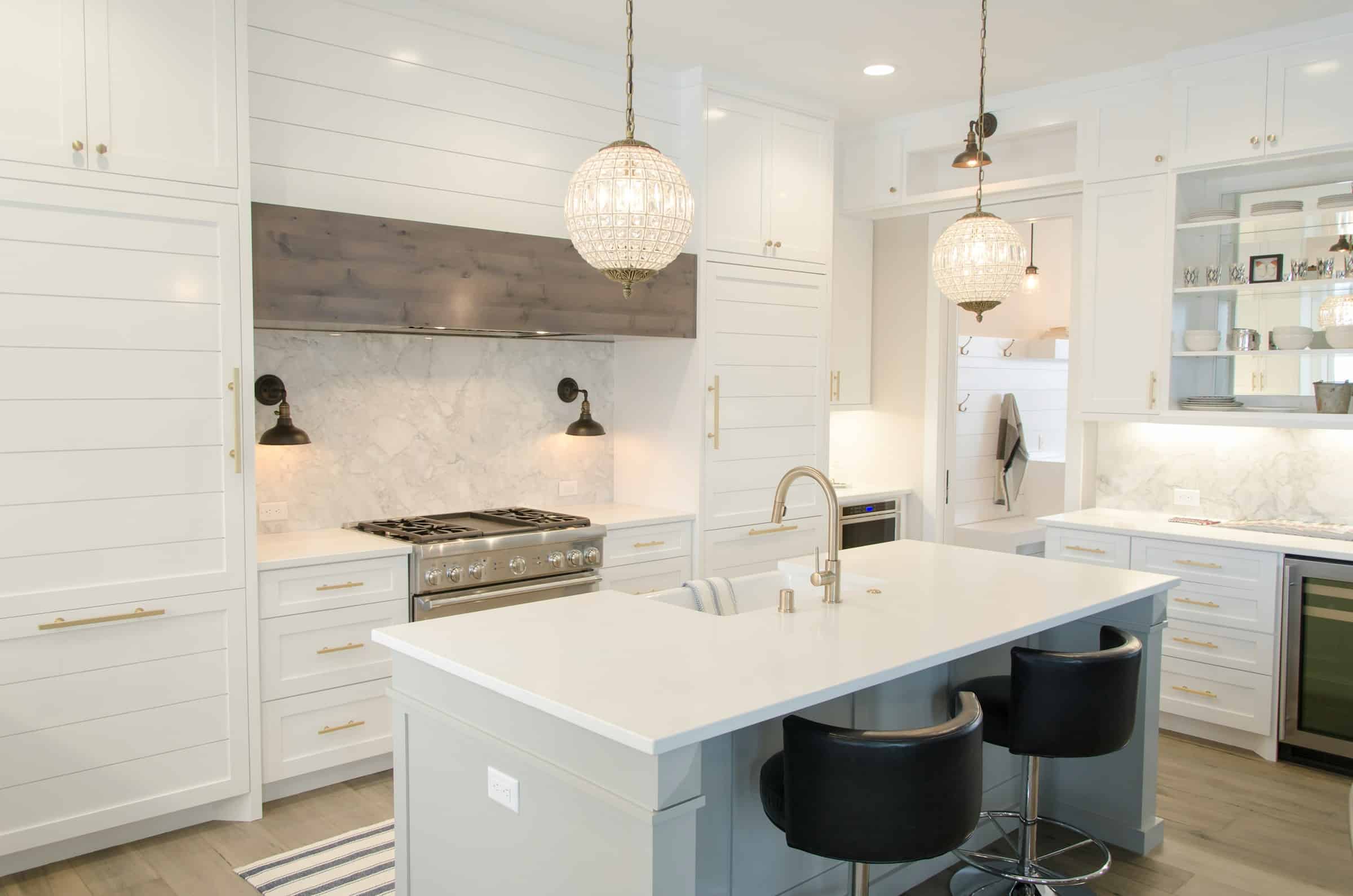What Are the Best Plants for a Vertical Herb Garden in a Kitchen with Limited Counter Space?

Gardening is not just limited to the outdoors. With a bit of creativity and know-how, you can cultivate an array of plants within the confines of your own home. One particularly exciting prospect is cultivating an indoor herb garden. Not only will this infuse your dishes with rich, homegrown flavors, but it also adds an element of greenery to your indoor space. The allure of an indoor herb garden is even more pronounced for those with limited counter space. In such cases, the solution is clear: a vertical garden. This allows you to utilize the vertical space in your kitchen to grow herbs. But how do you decide which plants are best suited for this purpose?
Identifying Suitable Herbs for Your Indoor Vertical Garden
Before you begin planting your herbs, it’s essential to identify which plants will thrive indoors in your kitchen. Some herbs are better suited to indoor growing conditions than others. Factors such as light availability, water requirements, and the herb’s growth habits can drastically affect how well a plant will do indoors.
Dans le meme genre : How to Integrate an Electric Fireplace into a Cozy Reading Room Without a Chimney?
Basil is an excellent choice for an indoor herb garden. This plant enjoys warm conditions and plenty of sunlight. A south-facing window is the perfect spot for your basil. It’s a pretty versatile herb that you can use in salads, soups, or even to make homemade pesto.
Parsley is another herb that loves the indoors. It prefers partial sunlight and well-drained soil. This herb is a staple in many recipes and adds a fresh, vibrant flavor to your dishes.
A voir aussi : How Can You Design a Functional Mudroom with Pet Cleaning Station in a Cold Climate?
Thyme is another indoor-friendly herb. It’s a relatively hardy plant that prefers full sunlight. It requires less water than many other herbs, making it a somewhat low-maintenance choice for your kitchen garden.
Chives are a top pick for your indoor herb garden. They are a hardy plant that can survive with only a few hours of sunlight each day. They also don’t require much water, making them an easy plant to care for.
The Importance of Proper Potting and Soil
When you’ve decided on the herbs you want to plant, the next step is to ensure you have the right pots and soil. The pot size is typically determined by the mature size of the plant. For example, larger herbs like basil will require larger pots while smaller herbs like chives can do well in smaller pots.
Using the right soil is also crucial for the growth of your herbs. A good quality potting mix that drains well will ensure your herbs don’t become waterlogged. Overly damp soil can lead to root rot, which is detrimental to your plants.
You may also want to consider adding a slow-release fertilizer to your soil. This will provide your herbs with the nutrients they need to thrive and produce flavorful leaves. However, be careful not to over-fertilize as this can lead to an excessive growth of leaves and a decline in flavor.
Choosing the Ideal Light and Water Conditions
Light and water are two fundamental elements when growing any plants, including herbs. Most herbs prefer full sunlight, which ideally means six or more hours of direct light daily. Position your pots near a south or west-facing window to maximize the amount of sunlight your herbs receive.
Watering is an essential aspect of plant care, but it’s crucial not to overwater your herbs. Overwatering can lead to root rot, which can kill your plants. Most herbs prefer their soil to dry out slightly between waterings, so make sure to check the soil before watering.
You can check the soil’s dryness by sticking your finger about an inch into the soil. If it feels dry, it’s time to water. If it feels damp, wait a day or two before checking again.
The Right Way to Harvest Your Herbs
Once your herbs have grown and are thriving, it’s time to harvest them. Proper harvesting techniques can ensure that your plants continue to produce and remain healthy.
When harvesting, it’s best to cut off the top third of the plant. This encourages the plant to grow more and become bushier. Always use sharp, clean scissors or pruning shears to make clean cuts. Harvesting in the morning, just after the dew has evaporated, is the best time to ensure that the herbs are at their freshest.
If you’re not using the herbs immediately, you can store them in the refrigerator wrapped in a slightly damp paper towel. They should be used within a week for the best flavor.
Creating a vertical herb garden in your kitchen with limited counter space may seem like a daunting task, but with the right knowledge and tools, it can be a rewarding and enjoyable experience. Choose the right plants, provide them with the appropriate soil, light and water conditions, and use proper harvesting techniques to ensure that your indoor herb garden thrives. With these tips, your kitchen will have a fresh supply of flavorful herbs all year round.
Making the Most of Available Space with a Vertical Herb Garden
Setting up your vertical herb garden is an art that involves clever use of available space. Always remember that not all of your kitchen wall or window area will get the same amount of light. The upper tiers of your vertical garden will naturally receive more light, particularly if it is positioned by a south facing window.
Carefully consider where each herb will go according to its light needs. Herbs that need full sunlight like basil and thyme should be placed at the top where they can get the most light. Parsley and chives, which can tolerate a bit less light, can be positioned further down.
Vertical gardening doesn’t limit you to using only traditional pots. Feel free to explore other space-saving options like wall-mounted planters or even repurposed items such as hanging shoe organizers or pallets. These are excellent garden ideas to help you make the most of your available space.
Remember to use a good quality potting soil and be mindful of each herb’s water requirements. Over or under watering can be detrimental to your plants, so it’s crucial to get this balance right. It might take a bit of trial and error to find what works best for your kitchen’s conditions and the specific herbs you’ve chosen.
The Convenience and Benefits of an Indoor Kitchen Herb Garden
Having a kitchen herb garden brings a wealth of benefits. Freshly harvested herbs from your vertical garden can significantly elevate the flavors of your dishes. There’s nothing quite like adding some homegrown basil to your pasta sauce or sprinkling some fresh parsley over your salad.
Growing herbs indoors also has positive effects on your well-being. Gardening, even on a small scale, is known to reduce stress and improve mood. The presence of greenery in your home can enhance the overall ambience and even improve air quality.
In addition, you’ll find that growing your own herbs can be more cost-effective in the long run. You no longer have to buy expensive fresh herbs from the store. Instead, you have a continuous supply right in your kitchen.
In conclusion, creating an indoor vertical herb garden in a kitchen with limited counter space is a smart and rewarding solution. It allows you to grow herbs in a confined space, providing you with fresh, homegrown ingredients for your meals. Not only will this allow you to expand your culinary horizons, but it also brings a touch of nature into your home, enhancing its visual appeal and overall ambiance. With careful selection of herbs, right pots and soil, and well-maintained water and light conditions, your vertical garden will flourish, giving you a year-round supply of fresh herbs.
